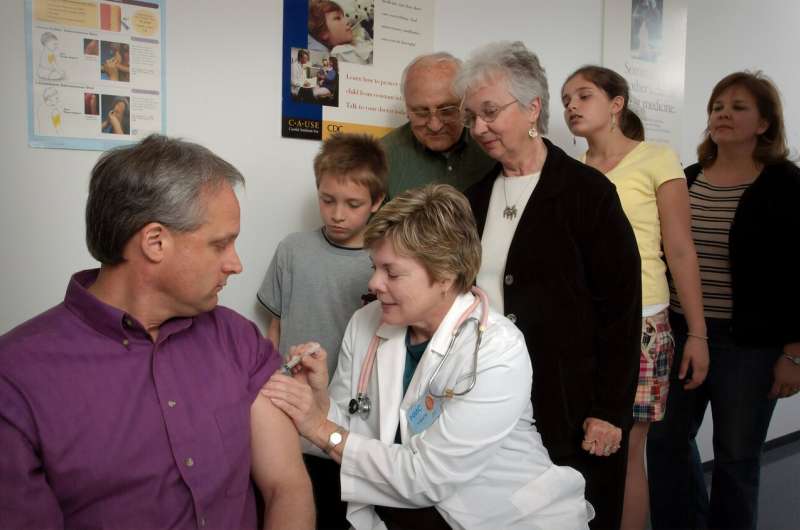What to know about the side effects of the COVID-19 vaccination

You’ve gone through the appointment rigmarole to get signed up for a COVID vaccine, got your first shot, waited the required three to four week period for your second. But when that booster dose comes, be warned that you might be experiencing symptoms a few hours later.
Emily Miller, an ICU nurse at OhioHealth Riverside, said she experienced side effects after receiving her second Pfizer vaccination on Jan. 13 at OhioHealth Riverside.
She recalled feeling fine for a few hours, but around 5 p.m., she felt flushed and began to experience hot flashes.
“And then at midnight that night, I woke up and I was fevering, chills and body aches,” Miller said.
Dr. Joseph Gastaldo, the systems director for infectious diseases at OhioHealth, said the symptoms are your body’s immune system response.
“When you have any of these symptoms, they are a reflection of your body developing an immune response to the vaccine,” Gastaldo said.
Here is some information on what symptoms you may experience and how you can alleviate some discomfort from the side effects:
What are the common symptoms after receiving your second vaccination?
According to the Centers for Disease Control and Prevention, symptoms after the vaccinations include pain, swelling, fever, chills, fatigue and headache.
Dr. Mark Herbert, an infectious disease specialist at Mount Carmel Health Systems, said the most common side effect that people have experienced from the vaccination is pain where they received their shot.
“This is a common symptom from all vaccinations, but the symptoms that seem to be more common after the COVID vaccine are symptoms like fatigue, headache and muscle aches,” Herbert said.
These symptoms are more frequently seen after the second vaccination, Herbert said.
Why might you experience stronger symptoms after the second vaccination than the first?
The theory is that the first time is likely to cause side effects because the vaccination is new to your body, and it’s the first time your immune system has been exposed to the antigen, Herbert said.
“The second time, your body has already experienced this antigen and has already developed antibodies, that when you get the second shot your body has a much more exuberant profound response,” Herbert said.
How should you treat your COVID-19 symptoms?
According to the CDC, to help with discomfort at the injection site they recommend applying “a cool wet washcloth over the sore area and exercising your arm.”
Herbert said if you’re experiencing headaches, muscle aches, fevers and chills you can use Tylenol or other acetaminophen to relieve some discomfort.
The CDC states, these medications are safe to take post-vaccination to relieve side effects, as long as you don’t have a medical reason as to why you can’t.
Medications shouldn’t be taken before the vaccination in hopes to prevent side effects, because it is unknown how the medications will impact how the vaccine will work.
Herbert said, doctors will also recommend that their patients stay hydrated after they receive the vaccination.
“The increased hydration is thought to decrease some of the symptoms like muscle aches, headaches and chills,” Herbert said. “So it would be reasonable to drink 16 to 32 ounces of water in the time period, following the shot over that same day.”
Miller said she took an Advil after her vaccination and got plenty of rest.
“I think it was gone within like 24 to 28 hours and it wasn’t like a slow progression to feeling better,” Miller said.
When should you see a doctor about vaccine symptoms?
The CDC said to call your doctor if your side effects don’t seem to be going away after a few days and if redness or tenderness at the injection shot increases after 24 hours.
Herbert said if symptoms increase over 48 hours, a patient should contact their doctor.
How can you report your symptoms?
The CDC recently developed a smartphone tool that gives the patient health check-ins after they receive the vaccine.
Gastaldo said one of the things people are asked to do after their vaccination is to register through the CDC with the tool, V-Safe.
He said after a patient is vaccinated, they are handed a paper with a QR code. If the patient takes a picture, it takes them to the CDC website where they are asked if they are willing to get text messages from CDC so they can check in on the patient and see if they are undergoing any side effects.
The patient submits their information regarding the symptoms. Depending on what was reported, the patient may receive a check-up phone call from the CDC.
Can you get COVID-19 after receiving the vaccine?
Yes. However, the vaccine does not cause COVID-19.
Herbert said they have seen patients who have contracted COVID-19 after they have received the vaccine.
Source: Read Full Article
